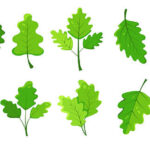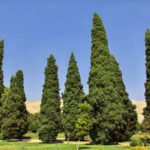Praline is a word that instantly evokes thoughts of luxury, sweetness, and indulgence. It is not just a confection; it is a symbol of craftsmanship, tradition, and creativity in the world of sweets. The term “praline” refers to a confection made from nuts and sugar, but its meaning and composition vary significantly across cultures. In France, it is traditionally made from almonds and caramelized sugar; in Belgium, praline refers to a filled chocolate; and in the American South, it takes the form of a creamy pecan candy. Understanding praline requires delving into its history, preparation methods, regional variations, and modern uses in desserts and the confectionery industry.
1. The Origin and History of Praline
The story of praline begins in 17th-century France, during a time when the art of confectionery was evolving into a symbol of luxury. The creation of praline is often attributed to Chef Clément Lassagne, who worked for Marshal César de Choiseul, Count of Plessis-Praslin, a nobleman in France. According to culinary folklore, Lassagne invented the confection by accidentally dropping almonds into boiling caramelized sugar. The result was a crunchy, nutty treat that soon became popular among the aristocracy. The confection was later named “praline” in honor of the Count, whose title “Praslin” was stylized into “praline.”
In the 18th and 19th centuries, praline spread throughout Europe, adapting to local tastes and available ingredients. When French settlers migrated to Louisiana, they brought the recipe with them. However, since almonds were scarce in the American South, pecans, a native nut, were substituted. The addition of cream and butter created a softer, fudge-like candy, distinct from its European counterpart. This evolution gave rise to the American praline, known for its creamy texture and melt-in-the-mouth sweetness.
Over time, praline became not only a delicacy but also a cultural symbol. In France, it retained its elegance as a gift item and dessert topping. In Belgium, it evolved further into chocolate pralines — smooth chocolate shells filled with ganache, cream, or nuts — which became central to Belgium’s international reputation for fine chocolate.
2. Types of Pralines Around the World
Though all pralines share a common foundation — nuts and sugar — the variations are quite distinct. Below is a comparison of the major types of pralines found across the globe.
| Type | Origin | Main Ingredients | Texture | Flavor Profile | Common Uses |
|---|---|---|---|---|---|
| French Praline | France | Almonds, caramelized sugar | Crunchy | Nutty, caramel-sweet | Dessert garnish, praline paste |
| Belgian Praline | Belgium | Chocolate shell with nut/cream filling | Smooth exterior, soft interior | Sweet, creamy | Chocolates, gift boxes |
| American Praline | USA (Louisiana) | Pecans, sugar, cream, butter | Soft, creamy, fudge-like | Buttery, rich | Candy, dessert topping |
| Swiss Praline | Switzerland | Chocolate, roasted nuts | Smooth | Balanced chocolate-nut flavor | Luxury confectionery |
| German Praline (Nougat-based) | Germany | Hazelnuts, nougat, chocolate | Soft | Sweet and nutty | Pastry and chocolate fillings |
Each style of praline reflects not just local ingredients but also cultural attitudes toward sweetness, texture, and presentation. French pralines are crisp and minimalist, focusing on caramelization. Belgian and Swiss pralines celebrate indulgence, while American pralines showcase comfort and southern hospitality.
3. Ingredients and Chemistry Behind Praline
The beauty of praline lies in its simplicity — sugar, nuts, and sometimes dairy — yet the chemistry that transforms these ingredients into a smooth, nutty confection is fascinating.
Key Ingredients:
- Nuts: Almonds, pecans, hazelnuts, or pistachios. They provide crunch, natural oils, and a distinct aroma. The roasting of nuts enhances flavor through the Maillard reaction, a process where proteins and sugars combine under heat to form rich brown compounds.
- Sugar: The base of praline. Depending on the recipe, it can be granulated, brown, or powdered. Sugar undergoes caramelization when heated, giving praline its characteristic golden color and deep flavor.
- Butter and Cream (for American praline): These ingredients add smoothness and create a soft, fudge-like consistency by preventing crystallization.
- Chocolate (for Belgian praline): High-quality couverture chocolate forms the shell and sometimes the filling.
- Flavorings: Vanilla, salt, or liqueurs are often added for depth and contrast.
Chemical Process in Caramelization:
When sugar is heated to around 170°C (338°F), it melts and undergoes caramelization — a complex process that breaks down sucrose into glucose and fructose, producing hundreds of aromatic compounds. The longer sugar is heated, the darker and more bitter the caramel becomes. Balancing this process is crucial for a perfectly flavored praline.
4. How Praline Is Made: Step-by-Step Process
Although there are multiple regional recipes, the fundamental process of making praline follows similar principles. Below is an overview of how traditional French and American pralines are prepared.
A. French Praline:
- Roast the Nuts: Almonds or hazelnuts are roasted to bring out flavor and reduce moisture.
- Caramelize the Sugar: Granulated sugar is melted slowly until golden brown.
- Combine Nuts and Caramel: The roasted nuts are mixed into the hot caramel.
- Cool and Harden: The mixture is spread onto a tray and allowed to cool.
- Crush or Grind: Once hardened, it can be broken into pieces or ground into praline powder or paste, used in pastries and fillings.
B. American Praline:
- Mix Sugar, Butter, and Cream: These ingredients are cooked together to form a syrup.
- Add Pecans: Once the syrup reaches the soft-ball stage, pecans are stirred in.
- Cool Slightly: The mixture is removed from heat and allowed to thicken.
- Drop onto Sheets: Spoonfuls are dropped onto parchment paper to cool and harden into soft, chewy candies.
C. Belgian Praline:
- Prepare Chocolate Shells: Molds are lined with tempered chocolate.
- Add Filling: Ganache, nut paste, or liqueur cream is piped inside.
- Seal the Shell: Another layer of chocolate closes the praline.
- Cool and Demold: The finished pralines are cooled and carefully removed.
5. Praline Paste and Its Culinary Uses
Praline paste is made by finely grinding caramelized nuts into a smooth, rich spread. It is a key ingredient in many French pastries, such as Paris–Brest, mousses, truffles, and ice creams. The process involves grinding until the nuts release their oils, creating a glossy, nut-butter-like texture.
Common Uses of Praline Paste:
| Use | Description |
|---|---|
| Pastry Creams | Added to custards for a nutty flavor |
| Chocolates | Mixed into ganache or fillings |
| Ice Cream | Blended for praline-flavored ice creams |
| Cakes | Used as a layer or frosting component |
| Tarts and Mousses | Adds creamy texture and complexity |
Praline paste can also be mixed with chocolate to create gianduja, the Italian forerunner of Nutella.
6. Nutritional Profile of Praline
Praline is an energy-dense food, providing a quick source of carbohydrates and fats. However, it also contains beneficial nutrients from nuts such as vitamins, minerals, and healthy fats. The nutritional content depends on the recipe and ingredients used.
| Nutrient | French Praline (per 100g) | American Praline (per 100g) |
|---|---|---|
| Calories | 480 kcal | 520 kcal |
| Total Fat | 22 g | 26 g |
| Carbohydrates | 64 g | 66 g |
| Protein | 5 g | 6 g |
| Fiber | 3 g | 2 g |
| Sugars | 60 g | 64 g |
| Sodium | 30 mg | 40 mg |
Although praline is not a low-calorie food, moderate consumption can offer nutritional benefits due to the healthy fats and antioxidants present in nuts. However, it should be enjoyed as an occasional treat rather than a daily snack.
7. Praline in Modern Confectionery and Gastronomy
In the world of fine desserts, praline continues to be a celebrated ingredient. It plays an essential role in chocolateries, bakeries, and patisseries around the world. Chefs use praline in innovative ways — incorporating it into mousses, macarons, layered cakes, and ice creams.
The rise of artisan chocolate making has further expanded praline’s role. Chocolatiers create complex pralines filled with exotic ingredients such as sea salt caramel, matcha, or chili ganache. The term “praline” now represents a standard of craftsmanship — balancing texture, flavor, and presentation in one bite.
Moreover, vegan and sugar-free pralines have emerged in response to modern dietary trends. These versions use coconut sugar, agave syrup, or plant-based creams, offering indulgence without guilt. Praline has proven its adaptability across centuries — evolving with culture, taste, and technology.
8. Industrial Production of Pralines
At the industrial scale, praline production requires precision and consistency. Automated systems handle roasting, caramelizing, and mixing processes, ensuring uniform texture and taste.
Stages in Industrial Production:
- Ingredient Preparation: Nuts are cleaned, sorted, and roasted in large rotating ovens.
- Sugar Caramelization: Sugar is melted in controlled heat systems.
- Mixing: Caramelized sugar and nuts are combined using mixers.
- Grinding and Refining: For praline paste, the mixture is passed through roll refiners and conches to achieve smoothness.
- Molding and Cooling: For praline chocolates, automated lines fill molds with chocolate and filling.
- Packaging: Finished pralines are cooled, inspected, and packed under hygienic conditions.
Modern factories use temperature-controlled rooms to prevent sugar bloom and moisture absorption, maintaining shelf stability and quality.
9. Cultural Significance of Praline
Praline holds deep cultural meaning in the regions where it evolved. In France, praline symbolizes sophistication and the heritage of classic patisserie. In Belgium, it stands as a national pride — a product that defines their world-renowned chocolate craftsmanship. In the American South, especially New Orleans, praline represents warmth, comfort, and family traditions. It’s a candy often sold in local shops and festivals, embodying southern hospitality.
This cross-cultural identity shows praline’s versatility not only as a food but as a shared language of sweetness across borders. Whether in a Parisian boutique, a Belgian chocolaterie, or a Louisiana candy shop, praline brings a sense of joy and nostalgia.
10. Storage, Shelf Life, and Preservation Tips
Praline’s quality depends heavily on storage conditions. Exposure to moisture, heat, or light can lead to sugar crystallization, rancidity, or melting.
Best Practices for Storing Pralines:
- Temperature: Keep between 15°C–18°C (59°F–64°F).
- Humidity: Store below 50% relative humidity.
- Container: Use airtight containers to prevent moisture absorption.
- Avoid Refrigeration: Unless necessary, as it can cause condensation.
- Shelf Life:
- French pralines: up to 6 months if stored properly.
- Belgian pralines: 2–3 weeks due to dairy fillings.
- American pralines: 1–2 months at room temperature.
Vacuum sealing or nitrogen packaging is often used industrially to extend shelf life.
11. Economic and Commercial Aspects
The praline industry forms a vital part of the global confectionery market. Europe, especially Belgium and Switzerland, leads in high-end praline exports, while the U.S. markets mass-produced pralines through candy brands. The global demand for praline-based products is rising, driven by consumer preferences for premium, artisanal, and gift-worthy confections.
Estimated Market Segments:
| Region | Market Focus | Popular Form |
|---|---|---|
| Europe | Luxury chocolate pralines | Boxed assortments |
| North America | Creamy pecan pralines | Candy and gift boxes |
| Asia-Pacific | Premium imports | Boutique chocolates |
| Middle East | Gift and celebration items | Filled chocolate pralines |
With the growth of e-commerce, pralines have found global reach, allowing small artisan chocolatiers to export worldwide. Packaging innovation and branding now play a crucial role in praline marketing.
12. Health Considerations and Modern Alternatives
Though praline is indulgent, it can be made healthier through smart ingredient substitutions. Using natural sweeteners such as stevia or coconut sugar, replacing cream with plant-based milk, and opting for dark chocolate instead of milk chocolate can enhance nutritional value. Nuts like almonds, pecans, and hazelnuts provide beneficial monounsaturated fats and antioxidants that support heart health.
Homemade pralines also allow control over sugar levels and ingredient quality. As part of a balanced diet, praline can be enjoyed without guilt — a reminder that moderation and mindfulness are key to enjoying sweets.
13. The Art of Making Perfect Praline at Home
Making praline at home requires patience and attention to temperature. The most common challenge is sugar crystallization, which can make praline grainy. To avoid this, sugar should be melted slowly without stirring until it begins to caramelize. A candy thermometer is useful for precision. Roasting nuts evenly and adding them at the right stage ensures perfect coating.
A well-made praline should have a glossy appearance, uniform caramel color, and balanced crunch or creaminess depending on the recipe. It can be enjoyed as-is or used to elevate desserts such as tarts, cakes, and even beverages.
14. Future Trends in Praline Innovation
Modern confectionery is witnessing exciting trends that redefine traditional praline making. Some of these include:
- Plant-based pralines made with vegan butter and coconut milk.
- Sugar-free pralines for diabetic-friendly indulgence.
- Exotic nut combinations like macadamia, pistachio, and cashew pralines.
- Flavor infusions such as espresso, matcha, rose, and sea salt caramel.
- Sustainable sourcing emphasizing fair-trade chocolate and ethically grown nuts.
These innovations maintain the essence of praline while meeting contemporary consumer expectations for health, ethics, and variety.
15. Conclusion
Praline’s journey from a French aristocratic treat to a global confectionery icon reflects the beauty of culinary evolution. Whether it’s the crisp caramelized almond praline of France, the creamy pecan praline of Louisiana, or the luxurious filled chocolate pralines of Belgium, each variety carries a unique story rooted in tradition, craftsmanship, and passion.
More than just candy, praline is an edible expression of art and culture — a harmony of sweetness, texture, and history that continues to captivate dessert lovers across generations. Its versatility, adaptability, and timeless appeal ensure that praline will remain a cherished delicacy for centuries to come.
FAQs
1. What is praline made of?
Praline is typically made of nuts (such as almonds, pecans, or hazelnuts) combined with caramelized sugar. Some versions include butter, cream, or chocolate, depending on regional style.
2. What is the difference between praline and brittle?
While both are nut-based candies, brittle is hard and glass-like, made purely of sugar and nuts. Praline, especially the American version, is softer and may include cream or butter for a fudge-like consistency.
3. Can praline be used in baking?
Yes, praline and praline paste are widely used in baking. They enhance cakes, pastries, mousses, and ice creams by adding nutty depth and caramel flavor.
4. How long does praline last?
The shelf life depends on type and storage. French pralines last up to six months, while Belgian and American pralines with cream or chocolate fillings last a few weeks to two months.
5. Are pralines healthy?
Pralines are calorie-dense sweets, but nuts provide healthy fats, vitamins, and minerals. When consumed moderately or made with natural sweeteners, they can be part of a balanced diet.











